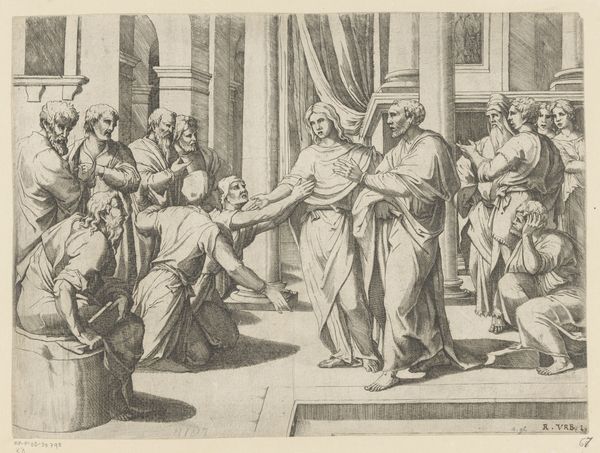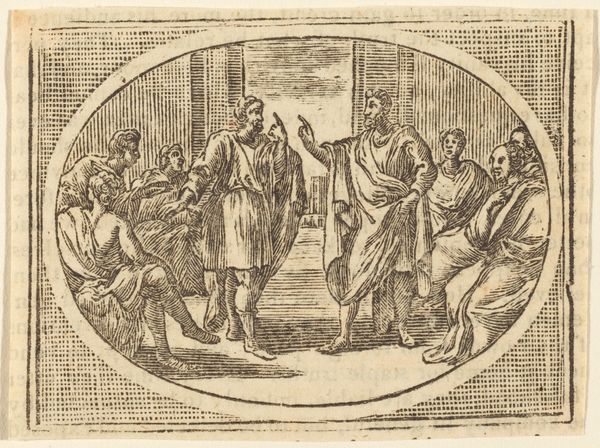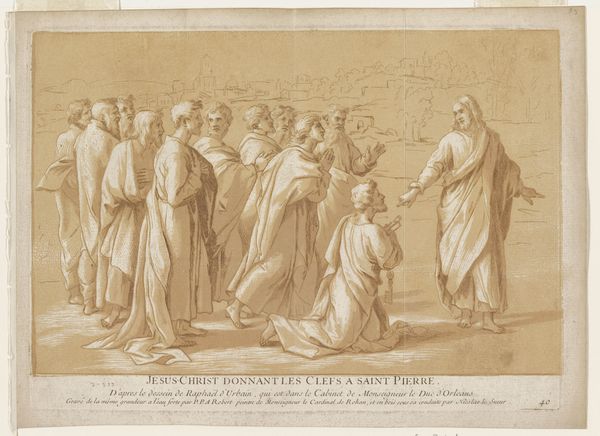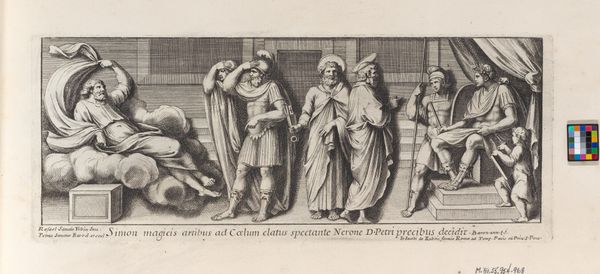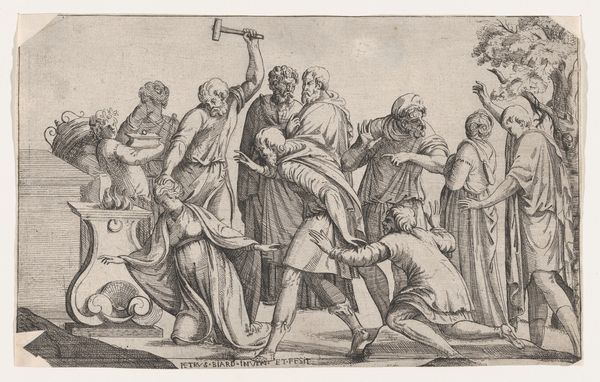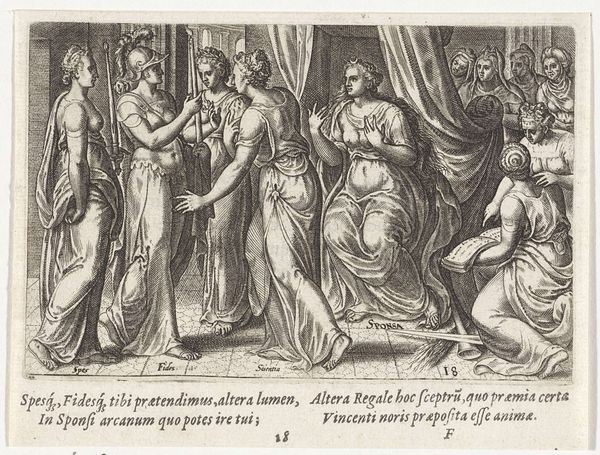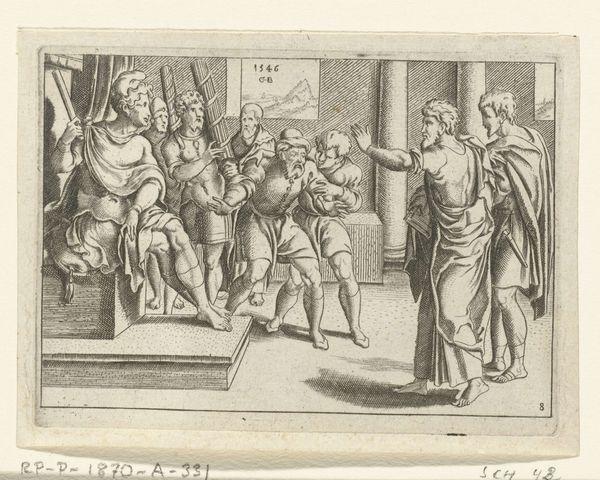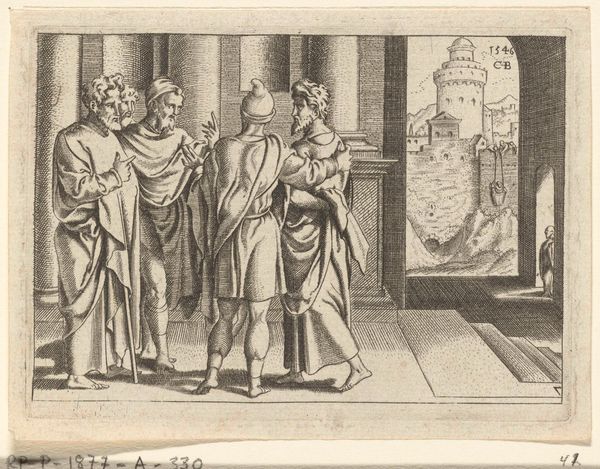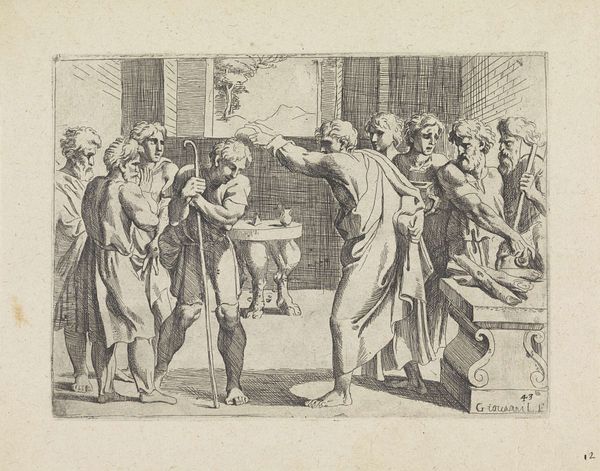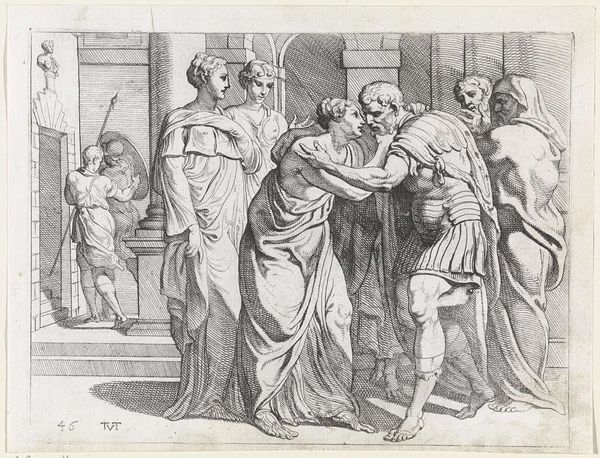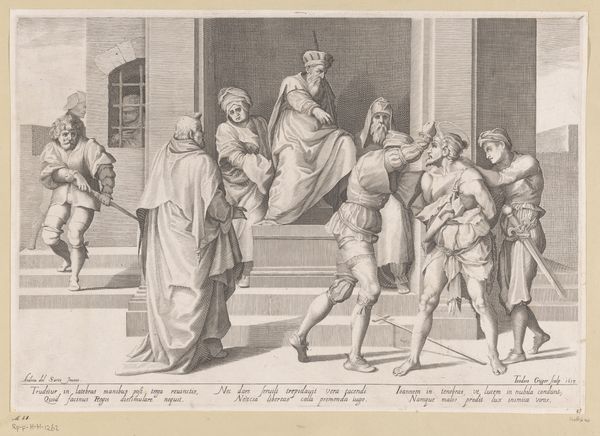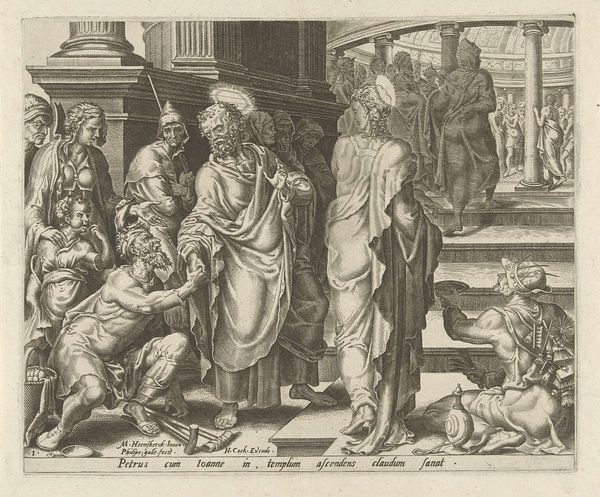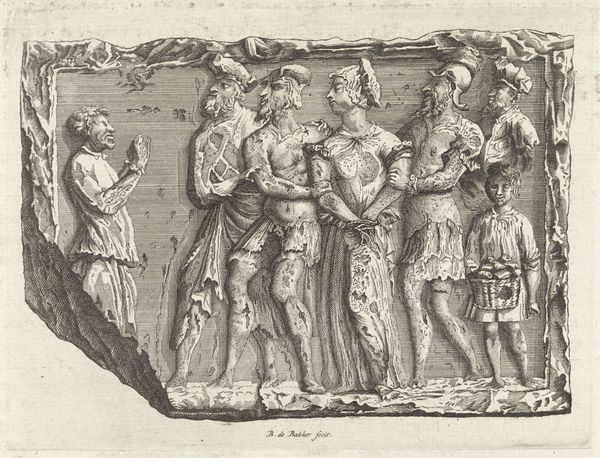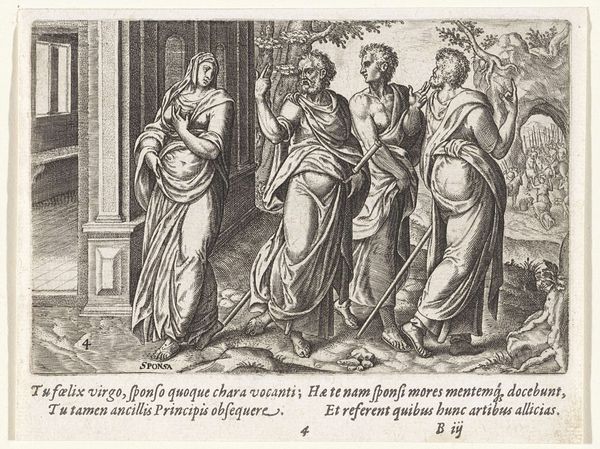
Plate 9: Joshua, standing at right, speaks to the people of Israel, after a lost fresco in the basamento of Bay 10 of the Vatican Loggia 1650 - 1677
0:00
0:00
drawing, print, engraving
#
portrait
#
drawing
# print
#
figuration
#
history-painting
#
academic-art
#
engraving
Dimensions: Sheet: 3 9/16 × 9 5/8 in. (9 × 24.5 cm)
Copyright: Public Domain
Curator: I find this engraving rather compelling. Created between 1650 and 1677 by Pietro Santi Bartoli, this piece, titled "Plate 9: Joshua, standing at right, speaks to the people of Israel, after a lost fresco in the basamento of Bay 10 of the Vatican Loggia," presents a scene rich with historical and symbolic weight. Editor: The stark lines create such a dramatic effect, almost theatrical. It strikes me as an image of leadership, but also deep division—some figures seem to be turning away, skeptical perhaps. Curator: Yes, that tension is palpable. The subject, Joshua addressing the Israelites, carries immense significance. Joshua, successor to Moses, urging his people towards commitment to their covenant with God, represents continuity, faith, and collective identity. The act of speech itself is portrayed as a potent symbolic event. Editor: I can't help but read this in light of the ever-present power structures inherent in religious narratives. Who is given the voice? Who is listening—or not listening, as you mentioned? I'm drawn to those figures who are disengaging; it invites reflection on dissenting voices throughout history. Curator: The original fresco would have added to the visual impact of the moment, investing space in its representation; in this form, the composition recalls the visual language of classical friezes, echoing themes of leadership and moral obligation passed through the ages. Notice how Bartoli emphasizes the physical gestures, which convey a sense of divine imperative. Editor: I wonder about accessibility. While the fresco in the Vatican Loggia would be viewed by few, a print like this expands the potential audience. It democratizes, to some degree, the viewing experience, enabling wider circulation of both the biblical story and Bartoli's interpretation. It's worth noting the colonial aspects too—the bible being historically deployed to coerce indigenous populations. Curator: An important point. Visual symbols possess no inherent, stable meaning, as psychology demonstrates; cultural context shapes our reading of religious, historical, and mythical images, changing across time and communities. Editor: Precisely. And that’s why examining them critically remains so necessary. Curator: Indeed. It is that interaction between context, representation, and reception which keeps history perpetually alive, like this artwork itself, still whispering after centuries. Editor: It reminds me that, ultimately, engagement is critical. Silence—turning away—is a political act in its own right.
Comments
No comments
Be the first to comment and join the conversation on the ultimate creative platform.
